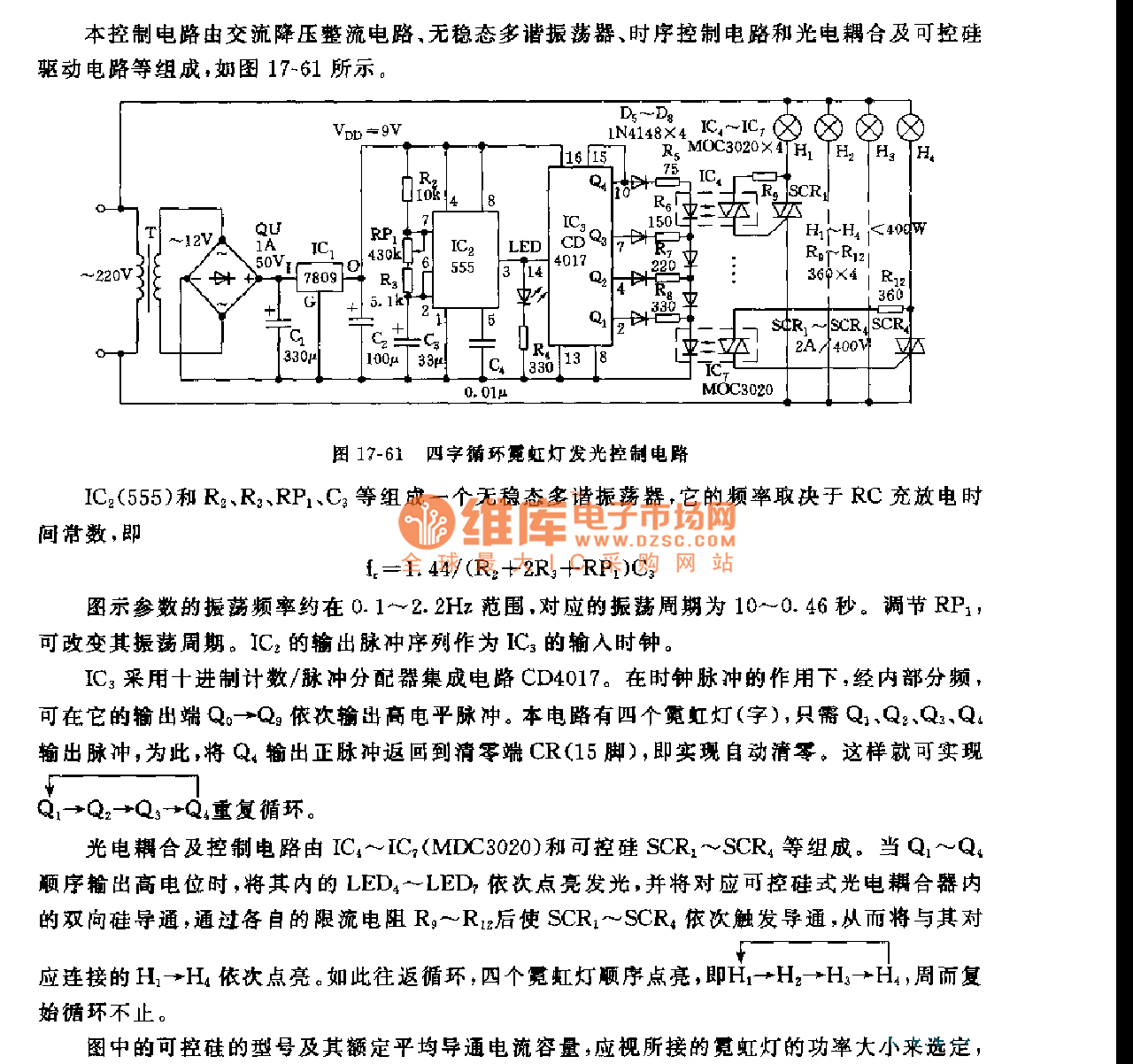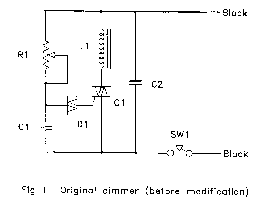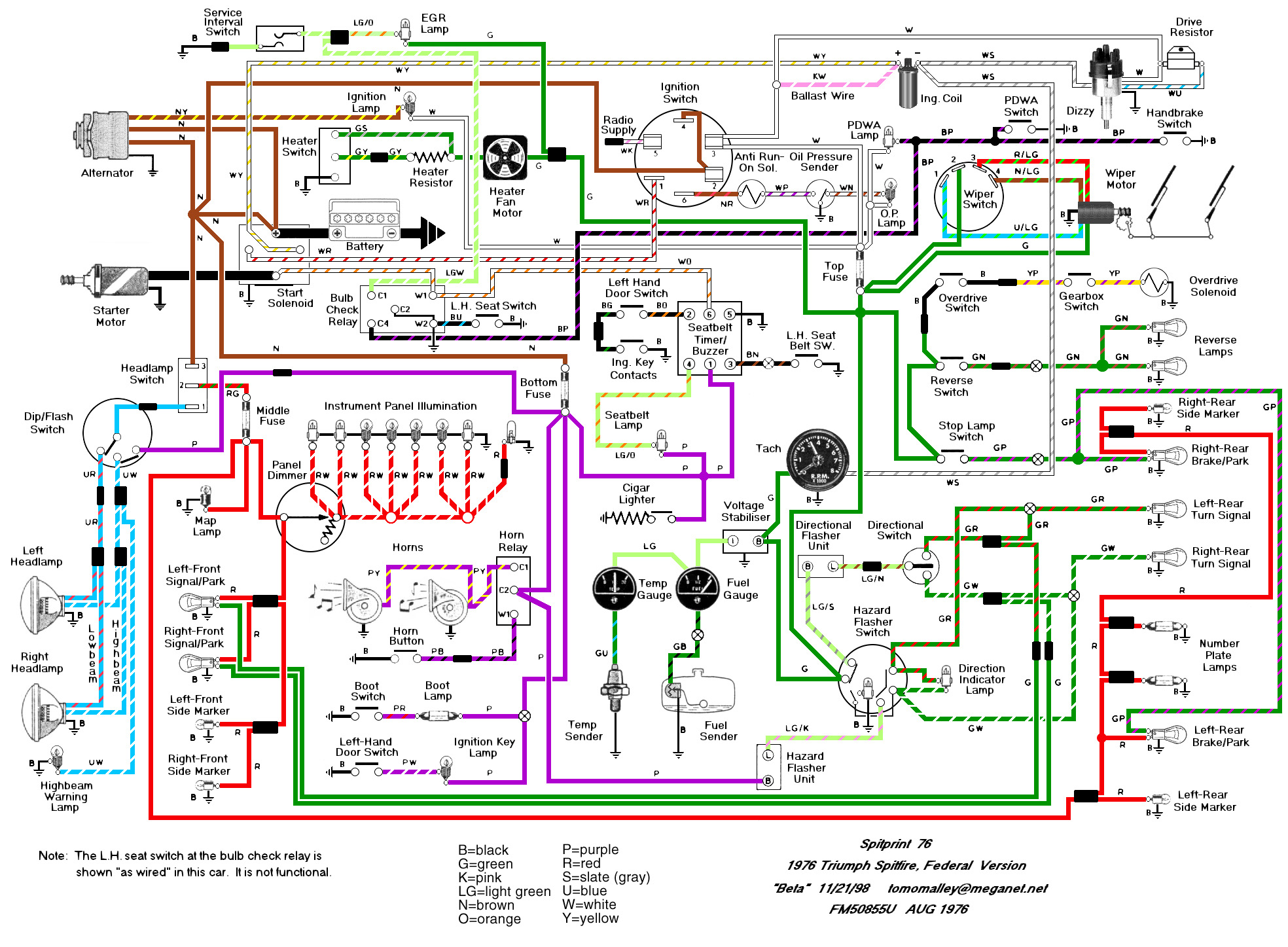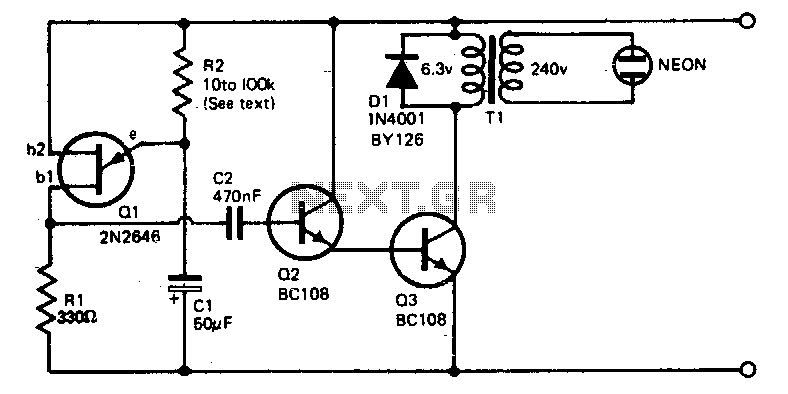
Neon blinker
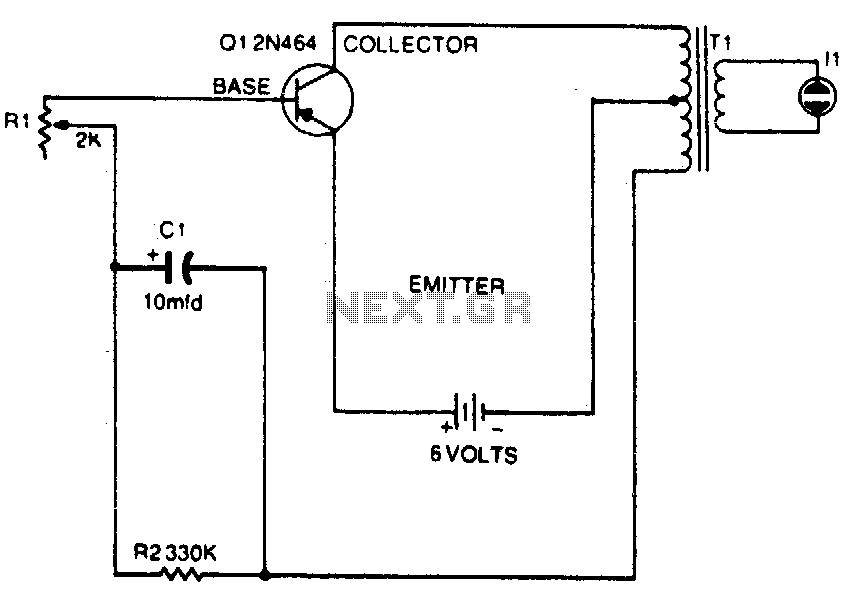
The universal output transformer and the transistor create a low-frequency oscillator. The flashing rate of the neon bulb is controlled by potentiometer R1.
The circuit consists of a universal output transformer coupled with a transistor to form a low-frequency oscillator. The primary function of this oscillator is to generate a periodic signal that can drive a load, in this case, a neon bulb. The neon bulb operates by ionizing the gas within it when a certain voltage threshold is reached, causing it to emit light.
The flashing rate of the neon bulb is adjustable and is determined by the resistance value set by potentiometer R1. This potentiometer allows for fine-tuning of the oscillator frequency by varying the resistance, which in turn affects the charging and discharging time of the capacitor in the circuit. As the resistance changes, it alters the time constant of the RC (resistor-capacitor) network, leading to a change in the frequency of the oscillation.
The output transformer serves to match the impedance of the oscillator circuit to the neon bulb, ensuring efficient energy transfer. The transistor acts as a switch that turns on and off at the oscillation frequency, controlling the current flowing through the transformer and ultimately the neon bulb.
This configuration is useful in applications where visual indication is required, such as in timers or alert systems, where the flashing of the neon bulb provides a clear visual signal. The adjustable flashing rate can be beneficial in various scenarios, allowing for customization based on specific operational requirements.The universal output transformer and the transistor form a low-frequency oscillator The rate of flashing of the neon bulb is determined by potentiometer Rl.
The circuit consists of a universal output transformer coupled with a transistor to form a low-frequency oscillator. The primary function of this oscillator is to generate a periodic signal that can drive a load, in this case, a neon bulb. The neon bulb operates by ionizing the gas within it when a certain voltage threshold is reached, causing it to emit light.
The flashing rate of the neon bulb is adjustable and is determined by the resistance value set by potentiometer R1. This potentiometer allows for fine-tuning of the oscillator frequency by varying the resistance, which in turn affects the charging and discharging time of the capacitor in the circuit. As the resistance changes, it alters the time constant of the RC (resistor-capacitor) network, leading to a change in the frequency of the oscillation.
The output transformer serves to match the impedance of the oscillator circuit to the neon bulb, ensuring efficient energy transfer. The transistor acts as a switch that turns on and off at the oscillation frequency, controlling the current flowing through the transformer and ultimately the neon bulb.
This configuration is useful in applications where visual indication is required, such as in timers or alert systems, where the flashing of the neon bulb provides a clear visual signal. The adjustable flashing rate can be beneficial in various scenarios, allowing for customization based on specific operational requirements.The universal output transformer and the transistor form a low-frequency oscillator The rate of flashing of the neon bulb is determined by potentiometer Rl.
